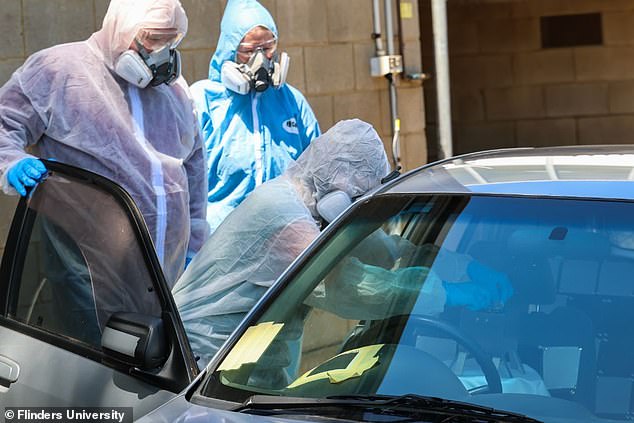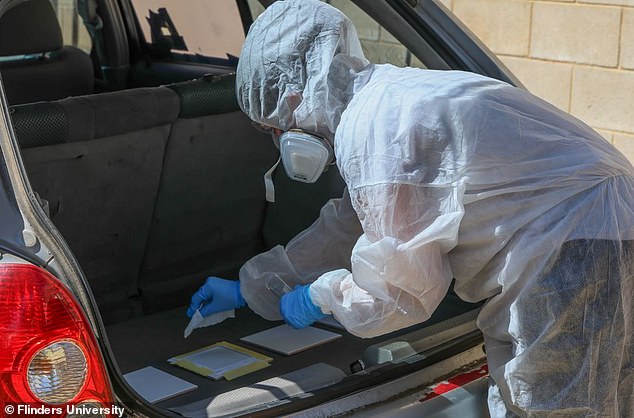Australians with a second-hand car have been warned they could come into contact with a dangerous drug left behind by a previous owner.
The shocking revelation comes after Flinders University in Adelaide examined the extent of methamphetamine contamination in two cars known to have been exposed to the drug, either by the driver or passengers.
The research paper, published in December, theorized that the confined space of a car could lead to traces of the drug being found throughout the vehicle, even with a short exposure time.
Traces of methamphetamine were found in 85 percent of the surface wipe samples, while 93 percent of the bulk material samples and all six air samples were also positive.
Although positive surface cleaning samples decreased over time, the Air conditioning, upholstery, interior ceilings and carpets were found to be the most contaminated places.
The results are particularly concerning as third-hand contact with methamphetamine can cause “respiratory problems, headaches, and cognitive and behavioral problems.”
Professor Kirstin Ross said testing for the drug and cleaning up contaminated cars is “necessary to protect public health”.
“Cars can be used to smoke, manufacture and transport methamphetamine and passengers or drivers of contaminated vehicles could be exposed to the drug,” he said.
A Flinders University investigation has found large traces of methamphetamine inside two cars used to simulate the production, use and transport of the dangerous drug (pictured, researchers)

The findings are particularly concerning since thirdhand exposure to methamphetamine can cause serious adverse health effects.
While it is unknown how many vehicles have been used to produce or consume methamphetamine, experts say more research is needed to determine how harmful it may be.
Flinders expert Gemma Kerry, whose PhD research focuses on third-hand methamphetamine contamination, said the results revealed how much leaches into the materials.
“These results demonstrated that methamphetamine can be detected in the air, on the surfaces of porous and non-porous materials, as well as within porous materials,” he said.
“The results also demonstrated that methamphetamine could still be detected in a second, third and fourth sampling event of a plastic surface, indicating that further research is needed on automotive testing and remediation.”
Associate Professor Stewart Walker added that research into contamination patterns could reveal how the drug was used in the car.
“Detecting the presence and concentration of methamphetamine in different areas of the car can give us clues about what caused this contamination,” he said.
“For example, high concentrations in the headliner, above the driver or each of the passengers, indicate who was smoking, while higher concentrations in the trunk indicate that the drugs were being transported there.”
But it also means that the difficult task of testing and cleaning vehicles, especially stolen or second-hand ones, falls to dealers, lenders, owners and authorities.
Owners of a contaminated car aren’t the only people at risk, either, and the research article also points the finger at first responders and auto lenders because of the extent of contamination with short-term use.


